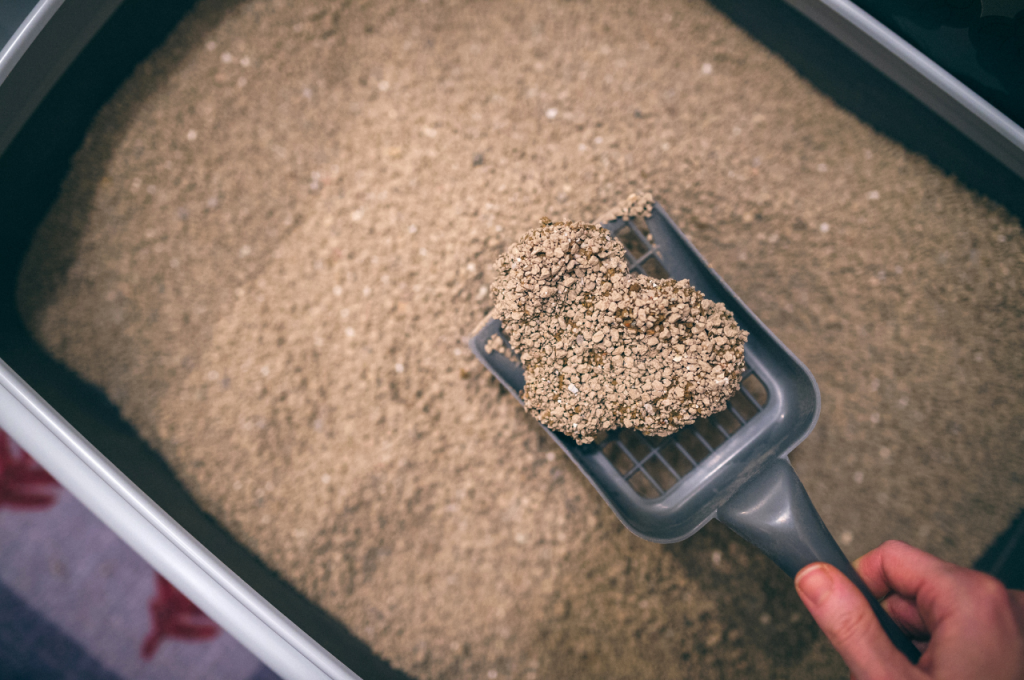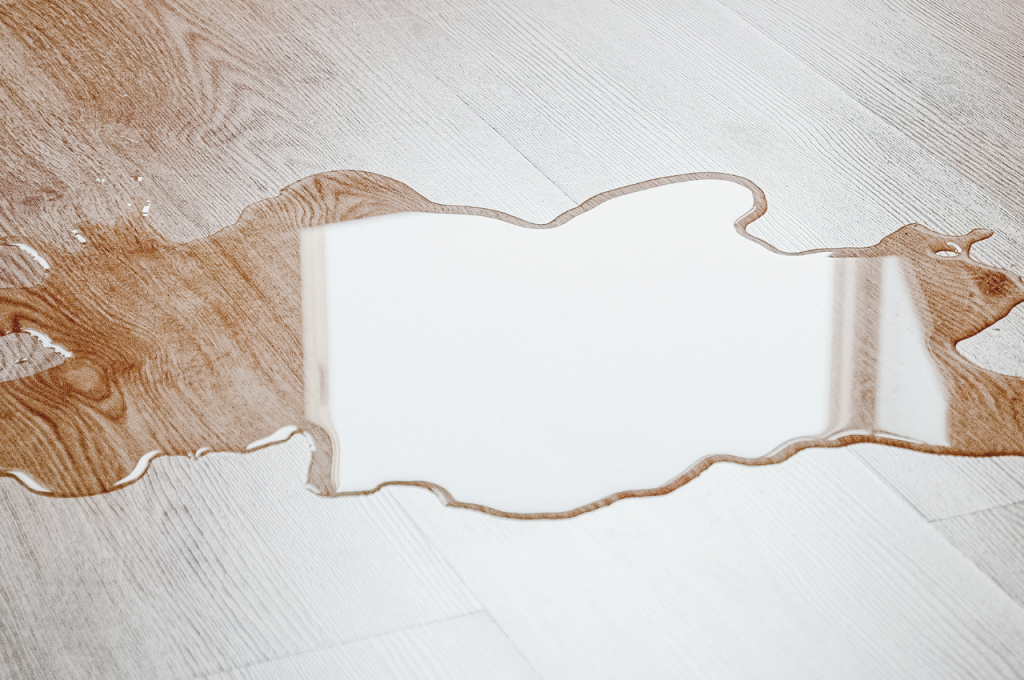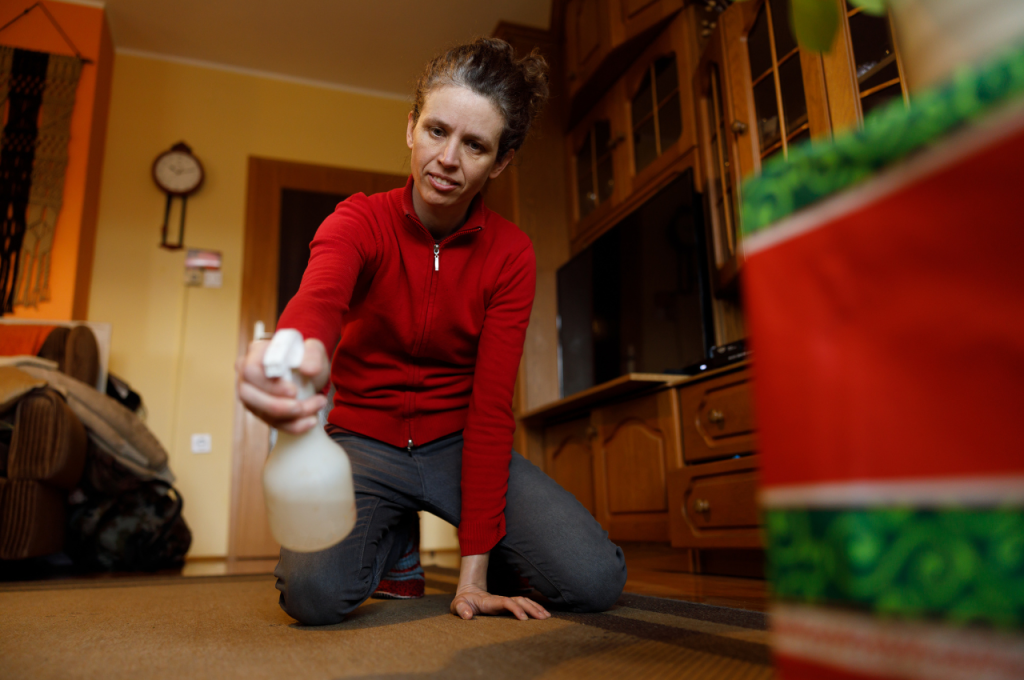To clean cat pee, blot the area, apply an enzyme cleaner, and let it dry. Cat pee odor and stains can be removed effectively by following these simple steps.
Accurate cleaning methods are crucial to prevent recurring accidents and maintain a fresh-smelling home. Using enzyme cleaners helps break down the urine compounds, eliminating both the smell and the stain. With the right approach, you can successfully clean cat pee and discourage your feline friend from repeating the behavior. Follow these strategies to tackle the issue effectively and create a clean environment for you and your cat.
Introduction to Cat Pee Issues
Dealing with cat pee problems can be a frustrating and unpleasant experience for any cat owner. Whether you are a seasoned cat parent or a new cat owner, it is important to understand the common challenges that come with cat urine and the potential health risks associated with improper cleaning. By addressing these issues promptly and effectively, you can create a clean and healthy environment for both you and your furry friend.

Common Challenges with Cat Urine
Cat urine can create several challenges in your home. Not only does it leave behind a strong and unpleasant odor, but it can also stain carpets, furniture, and other surfaces. Additionally, cat urine contains ammonia, which can attract your cat back to the same spot, leading to repeated incidents.
Here are some common challenges you may encounter when dealing with cat urine:
- Odor: Cat urine has a distinct and pungent smell that can permeate your home if not properly cleaned.
- Stains: Cat urine stains can be difficult to remove from various surfaces, including carpets, upholstery, and hardwood floors.
- Re-marking: If cat urine is not completely eliminated, your cat may continue to mark the same spot, creating an ongoing problem.
Health Risks Associated with Improper Cleaning
Properly cleaning cat urine is not just about eliminating the odor and stains; it is also crucial for maintaining a healthy living environment. When cat urine is not effectively cleaned, it can pose several health risks, both for humans and cats themselves.
Here are some health risks associated with improper cleaning of cat urine:
- Bacterial growth: Cat urine can provide a breeding ground for bacteria, which can lead to the growth of harmful pathogens.
- Respiratory problems: The ammonia in cat urine can irritate the respiratory system, causing breathing difficulties, especially in individuals with asthma or allergies.
- Spread of diseases: If not properly cleaned, cat urine can contribute to the spread of diseases, such as toxoplasmosis, which can be particularly harmful to pregnant women and individuals with weakened immune systems.
By understanding the common challenges with cat urine and the potential health risks associated with improper cleaning, you can take the necessary steps to effectively address these issues.
Identifying The Source
To effectively clean cat pee, start by identifying the source of the odor. Use a black light to spot the affected areas and clean them with an enzymatic cleaner. This will help break down the urine and eliminate the smell. Regular cleaning can prevent re-marking.
Cats are generally low-maintenance pets, but one of the most frustrating issues that cat owners face is dealing with cat pee. Cleaning cat pee is not only unpleasant but also challenging. It’s crucial to identify the source of the problem before you start cleaning it up. This will help you to prevent your cat from repeating the behavior in the future. Here are some tips for locating cat pee stains.
Tips for Locating Cat Pee Stains
The first step in cleaning cat pee is to identify the location of the stain. This can be challenging, especially if the stain is on a carpet or a rug. Here are some tips for locating cat pee stains:
- Use your nose: Cat pee has a very strong odor. Use your sense of smell to locate the source of the smell. Move around your house and try to identify where the smell is coming from.
- Check the litter box: Sometimes, cats pee outside the litter box when they are unhappy with their litter box. Check the litter box to ensure that it’s clean and suitable for your cat.
- Look for wet spots: If you see wet spots on your furniture or carpet, it’s a sign that your cat has peed in that area.
Using UV Light to Find Hidden Spots
Sometimes, cat pee stains are not visible to the naked eye, especially if they are on a carpet or a rug. In such cases, you can use a UV light to find hidden spots. UV lights work by illuminating the urine stains, making them visible to the naked eye. Here are some tips for using UV light:
- Turn off the lights: To see the urine stains clearly, you need to turn off all the lights in the room.
- Scan the room: Use the UV light to scan the room. Focus on areas where your cat spends most of its time.
- Mark the spots: Once you have located the urine stains, mark them with a piece of chalk or tape. This will help you to find them easily when you start cleaning.
Identifying the source of cat pee stains is the first step in cleaning them up. Use your nose, look for wet spots, and check the litter box to locate the stains. If you can’t find the stains, use a UV light to locate hidden spots. By following these tips, you can easily identify the source of the problem and prevent your cat from repeating the behavior in the future.
Immediate Actions to Take
Act immediately to clean cat pee by blotting the area with paper towels, then applying an enzymatic cleaner to break down the odor-causing compounds. Rinse with water and dry thoroughly. This swift action can prevent stains and lingering smells.
If you are a cat owner, you know how challenging it can be to deal with cat pee. It not only leaves a foul odor but also stains your carpets and furniture. Therefore, it is essential to take immediate action to clean up the mess. Here are the three critical immediate actions to take when cleaning cat pee.
Blotting The Wet Area
The first thing to do when you discover cat pee is to blot the wet area immediately with a paper towel or clean cloth. Blotting helps to remove as much moisture as possible before it soaks into the carpet or furniture. Make sure to press down firmly and repeat until the area is mostly dry.

Avoiding Common Cleaning Mistakes
Many people make the mistake of using hot water or steam to clean cat pee. However, this can cause the urine to set in and make it more difficult to remove. Instead, use cold water and a mild detergent to clean the area. You can also use an enzymatic cleaner specifically designed for pet urine stains. Avoid using ammonia or vinegar as they can intensify the urine odor. To prevent future accidents, it is essential to address the root cause of the problem. If your cat is not using the litter box, it may be due to a medical condition or behavioral issue. Consult with your veterinarian to rule out any underlying health problems and work with a cat behaviorist to address any behavioral issues.
In conclusion, taking immediate action when cleaning cat pee is crucial to prevent staining and foul odor. Remember to blot the wet area, avoid common cleaning mistakes, and address the root cause of the problem to prevent future accidents.
Natural Cleaning Solutions
Wondering how to clean cat pee? Natural cleaning solutions work well. Use a mixture of white vinegar and water to neutralize odors, then sprinkle baking soda to absorb moisture. These eco-friendly methods keep your home fresh and clean.
Vinegar and Water Mixture
To clean cat pee, use a vinegar and water mixture. Combine equal parts of white vinegar and water, apply it to the stain, and let it sit for a few minutes. Blot with a clean cloth to remove the odor and stain.
Baking Soda as an Odor Absorber
Baking soda is an excellent odor absorber for cleaning cat pee. Sprinkle it on the affected area, let it sit for 15 minutes, and then vacuum it up. This helps neutralize unpleasant smells effectively and naturally.
Commercial Enzymatic Cleaners
Commercial enzymatic cleaners are highly effective in breaking down cat urine and eliminating odor, making them a popular choice for pet owners. These cleaners contain enzymes that specifically target the uric acid in cat urine, effectively neutralizing the odor and preventing re-marking. Understanding how these enzymes work and the top enzymatic cleaners for cat urine can help you effectively tackle cat pee odors in your home.
How Enzymes Break Down Urine
Enzymes work by breaking down the uric acid crystals in cat urine, which are the root cause of the persistent odor. When the enzymes come into contact with the urine, they initiate a chemical reaction that breaks down the uric acid molecules into carbon dioxide and ammonia. This process effectively eliminates the odor at its source, rather than simply masking it.
Top Enzymatic Cleaners for Cat Urine
When selecting an enzymatic cleaner, it’s important to choose a high-quality product that is specifically formulated to target cat urine odors. Some top enzymatic cleaners for cat urine include:
- Nature’s Miracle Advanced Just for Cats Stain and Odor Remover
- Rocco & Roxie Professional Strength Stain & Odor Eliminator
- Simple Solution Cat Stain & Odor Remover
These enzymatic cleaners are formulated to effectively break down cat urine odors and are safe to use on various surfaces, including carpets, upholstery, and hardwood floors.
Preventing Future Accidents
To prevent future accidents caused by cat pee, thoroughly clean the affected area with a mixture of white vinegar and water. Use an enzyme cleaner to eliminate odors and deter cats from remarking. Consider consulting a vet if inappropriate elimination persists.
Litter Box Training Tips
Proper litter box training is crucial for preventing future accidents. Ensure the litter box is easily accessible and located in a quiet, low-traffic area. Regularly scoop and clean the litter box to maintain cleanliness and encourage your cat to use it consistently.
The Importance of Regular Veterinary Check-ups
Scheduling regular veterinary check-ups is vital for identifying and addressing any underlying health issues that may contribute to inappropriate elimination. Additionally, your veterinarian can provide guidance on behavioral and environmental factors that may be impacting your cat’s litter box habits.
Odor Elimination Techniques
Cleaning up cat pee is not just about removing the liquid and stains. The odor can linger and be quite challenging to eliminate. To effectively tackle this issue, it is important to employ odor elimination techniques that address the root cause of the smell.
Air Purification Strategies
When dealing with cat pee odor, air purification is essential. Using air purifiers with activated carbon filters can help to remove the lingering smell from the air. Additionally, opening windows and allowing fresh air to circulate can also aid in reducing the odor.
Sealing and Protecting Surfaces
Sealing and protecting surfaces is crucial in preventing cat pee odor from seeping into porous materials. Utilizing sealants designed for specific surfaces, such as wood or concrete, can effectively block the odor and protect the underlying material.
Professional Cleaning Services
For those dealing with cat pee, professional cleaning services may be necessary. To start, blot the area with paper towels and apply an enzymatic cleaner. Avoid using ammonia-based cleaners and be sure to thoroughly rinse the area.

When to Call The Professionals
When the odor of cat urine lingers despite your best efforts to clean it, it may be time to seek professional help. Persistent odors can indicate that the urine has penetrated deep into the carpet or furniture, making it difficult to fully eliminate with household cleaning products. Additionally, if your pet has repeatedly soiled the same area, it may require professional treatment to ensure that the odor and stain are effectively removed.
Choosing The Right Service for Pet Stains
Selecting the right cleaning service for pet stains is crucial in ensuring that the problem is effectively resolved. Look for a service provider that specializes in pet odor and stain removal. Check for customer reviews and inquire about their cleaning methods to ensure they are safe for pets and the environment. Ask for a detailed cost estimate and inquire about any guarantees they offer for their services.
When considering professional cleaning services for cat pee, it’s important to choose a provider with the expertise and experience to effectively remove stains and odors. By doing so, you can ensure a fresh and clean environment for both you and your furry friend.
Conclusion
Cleaning cat pee requires patience and the right tools. Remember to act promptly and use enzymatic cleaners for effective odor removal. Regular cleaning and positive reinforcement can prevent future accidents. Embrace these tips to maintain a fresh and hygienic home environment for you and your feline companion.
